Alternative names Tang Place of origin Korea | ||
 | ||
Similar Jjigae, Bokkeum, Jeon, Jorim, Doenjang | ||
Kate makes ddok guk korean traditional new years dish
Guk (국, [kuk]), also sometimes known as Tang (탕, [tʰaŋ]), is a class of soup-like dishes in Korean cuisine. Guk and tang are commonly grouped together and regarded as the same type of dish, although guk is more watery and a basic dish for the Korean table setting, and is usually eaten at home; tang has less water than guk and has been developed for sale in restaurants.
Contents
- Kate makes ddok guk korean traditional new years dish
- Taro soup toran guk
- Overview
- Types
- Malgeun jangguk
- Gomguk
- Tojangguk
- Naengguk
- Ingredients
- Gukbap
- References
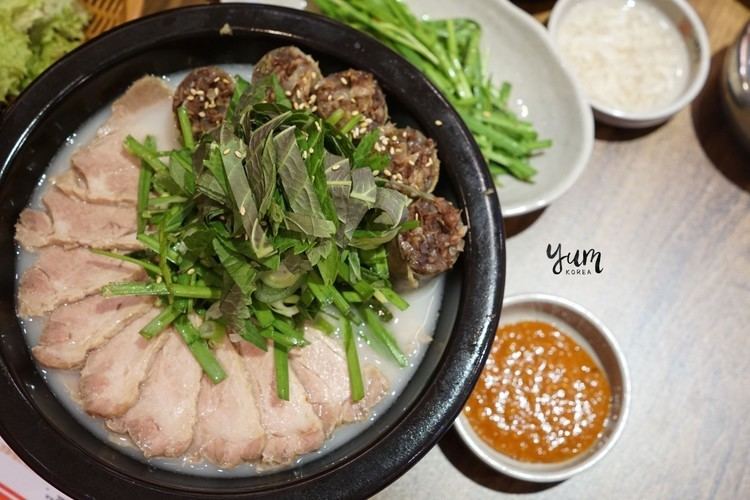
Taro soup toran guk
Overview
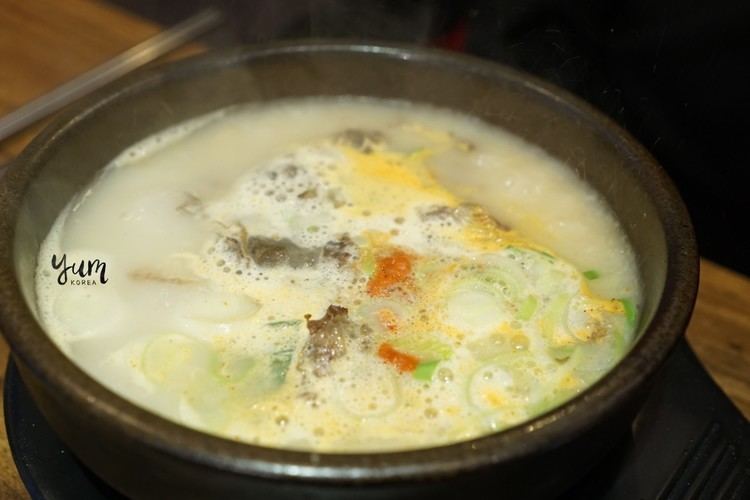
Guk is a native Korean word, while tang is a Sino-Korean word that originally meant "boiling". Tang has been used as an honorific term in place of guk. Tang can denote the same meaning as guk in the names of dishes such as mae-untang (spicy seafood soup), daegutang (codfish soup), samgyetang (ginseng chicken soup), or chueotang (추어탕).
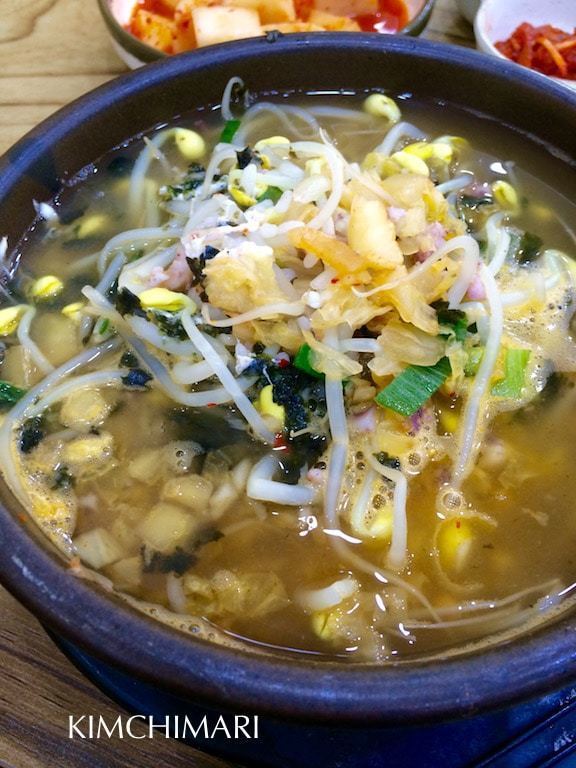
Generally, the names of soups made with vegetables are suffixed with guk rather than tang. Toranguk (taro soup), kimchiguk (kimchi soup), muguk (radish soup), siraegiguk (soup made with napa cabbage), and miyeok guk (sea mustard soup) are some examples. Gamjaguk and gamjatang are made with different ingredients; gamjaguk is made largely with potatoes, but gamjatang is made with pork bones and few potatoes.
Types
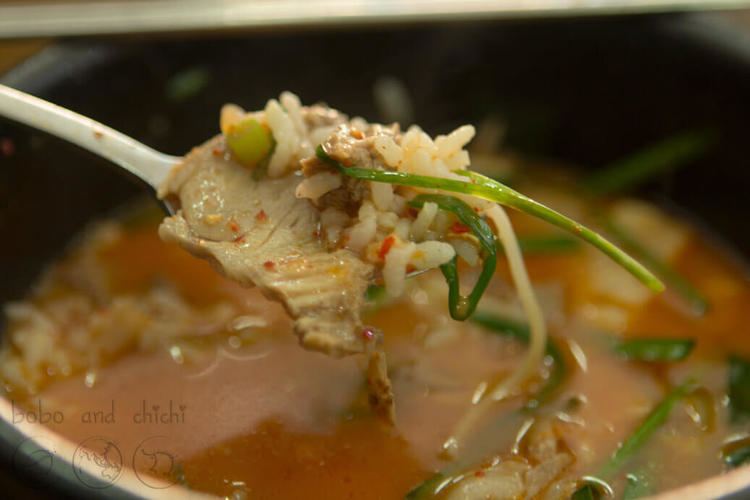
Guk is largely categorized into four groups of soups, such as malgeun jangguk (맑은 장국), gomguk (곰국), tojangguk (토장국), and naengguk (냉국). Malgeun jangguk literally means "clear (malgeun, 맑은) soup (guk, 국) seasoned with a condiment (jang, 장)," such as doenjang (soy bean paste) or ganjang, and is served in a bansang (반상, regular meal table). The main ingredients for malgeun jangguk are meat, fish, vegetables, and seafoods. Gomguk, also called gomtang, refers to either a soup type made by boiling various beef parts such as rib, oxtail, brisket, head, and so forth for a long time, or made with ox bone by the same method. The broth of gomguk tends to have a milky color and to be rich and hearty taste. It can also be made with chicken or pork bone, to produce samgyetang or gamjatang.
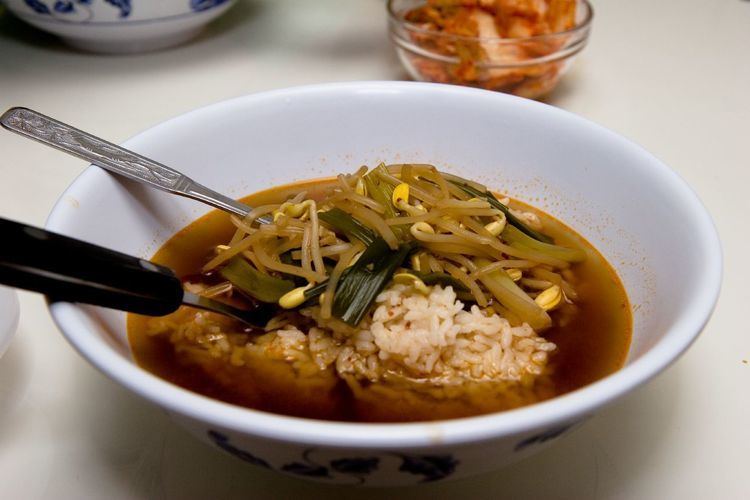
Tojangguk are based on doenjang broth and ssaltteumul (쌀뜨물, leftover water after washing rice for cooking). The taste is usually savory and deep. Naengguk are cold soups usually eaten in summer. These soups are usually clean and tangy, such as with oi naengguk (오이냉국, cold cucumber) and miyeok naengguk (미역냉국, cold wakame soup). Kkaetguk (깻국, sesame soup), made with chicken and sesame seeds, is thick and serves to replenish and supplement nutrients during hot weather.
Malgeun jangguk
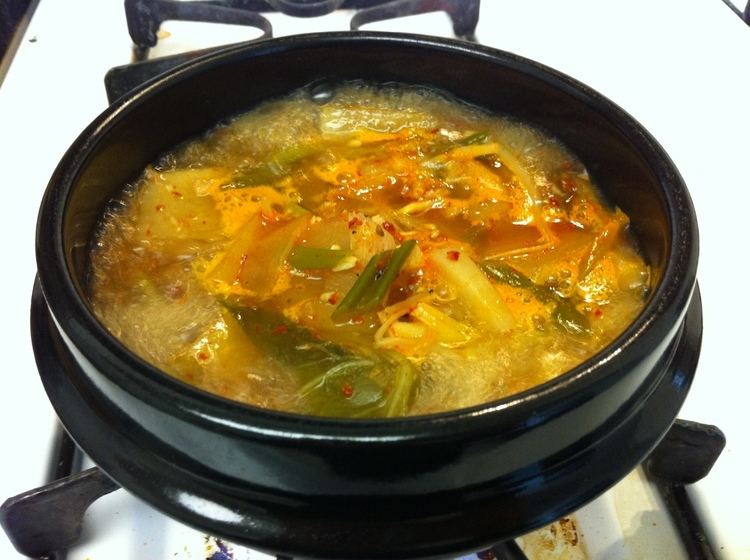
Gomguk
Tojangguk
Tojangguk are eaten all year round. The term emerged in the 1930s in Korean cookbooks.
Naengguk
Naengguk refers to all kinds of cold soups, mainly eaten in summer. They are also called changuk (literally "cold soup") in pure Korean while the term naengguk is a combination of a Hanja word and a pure Korean word with the same meaning. The first historical record on naengguk appears in a poem written by Yi Gyu-bo (1168–1241), a high officer of the Goryeo period (918–1392). Naengguk is referred to as "sungaeng" in the poem, which literally means sunchaeguk, soup made with sunchae (Brasenia schreberi). Yi praised its clear and plain taste.
Naengguk is generally divided into two categories according to taste and ingredients. One group of naengguk is made by mixing chilled water and vinegar to give a sweet and sour taste; examples include miyeok naengguk made with wakame, oi naengguk made with cucumber, pa naengguk made with spring onions, nameul naengguk made with garlic, and gim naengguk made with gim or nori. The other group is made to supplement health and has rich tastes, such as chilled soup made with chicken, sesame, or soy bean.
Ingredients
Gukbap
Gukbap (국밥, Korean pronunciation: [kukp͈ap]) are dishes developed from guk. The term literally means "soup with rice." The dish is typically served in restaurants, and has become popular among the working class since the late Joseon Dynasty.
The Japanese word for gukbap is クッパ kuppa. Video game designer Shigeru Miyamoto lent the word to the name of the character Bowser Koopa (大魔王クッパ Daimaō Kuppa in Japanese) in the Mario series of video games. Alternative names ユッケ Yukke (yukhoe) and ビビンバ Bibinba (bibimbap) were also considered, as Miyamoto had intended to name him after a dish in Korean cuisine.
